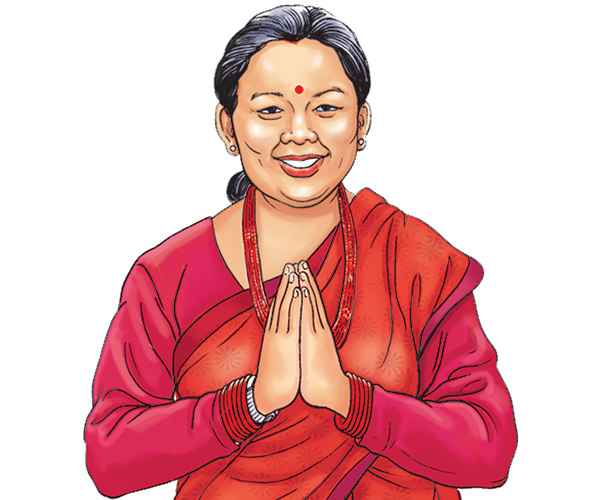Before two earthquakes destroyed thousands of homes and communities across Nepal, Aama (meaning “mother” in Nepali), star of the USAID-funded Bhanchhin Aama drama and call-in radio program, answered questions from new mothers about nutrition, sanitation and contraception.
Post-earthquake, Aama is back on the air and her role is more essential than ever as an advisor to Nepalis struggling to survive under difficult conditions.
Now, Aama and a guest expert answer questions that are a matter of life and death for Nepal’s families most at risk for disease. For thousand-day (from conception through a child’s second birthday) mothers and their infants, information about hand washing, breastfeeding, antenatal care (ANC) and purification of water before drinking and meal preparation have taken on even greater importance. Other questions reflect the need to respond to the fears of traumatized earthquake victims, such as: “If my child was born during the earthquake, will she be disabled?”
In the earthquakes’ aftermath, Bhanchhin Aama also serves as a clearinghouse for dispelling rumors that would otherwise run rampant in an information vacuum. The program is contributing to the continuing national communication effort to allay fears, provide information on the current situation and give health advice.
Bhanchhin Aama isn’t the only source of information for earthquake victims. Emergency communication activities are coordinated among the Government of Nepal and partners by the Communicating with Communities (CWC), which has produced a Coordinated Earthquake Response Communication Plan.
The CWC is supported by two USAID-funded Johns Hopkins Center for Communication Programs’ efforts: the Health Communication Capacity Collaborative (HC3 Nepal) and the Suaahara Nutrition program. Both programs are contributing to developing Bhanchhin Aama programs as well as complementary messages, materials, radio spots and jingles on key health issues including water, sanitation, safety, breastfeeding and child feeding.
HC3 is also on the ground in affected districts providing thousand-day women and families with information about water, sanitation and hygiene (WASH), nutrition, maternal and child health and safe motherhood in both Nepali and Tamang languages. Camp dramas created and performed by youth in Tamang convey key messages as well.
Suaahara is initiating Mother-Baby areas (MBAs) in affected districts. Mother-Baby Areas are safe, low-stress spaces where mothers can breastfeed, rest, eat and receive skilled counselling and targeted advice about breastfeeding and nutrition.
Meanwhile, HC3 and Suaahara’s regular activities aimed at thousand-day families continue in the non-affected areas of Nepal.
The USAID-funded Suaahara program is a consortium of seven partners: Save the Children, with Helen Keller International, JHPIEGO, Johns Hopkins Center for Communication Programs, Nepal Water for Health, Nutrition Promotion and Consultancy Services and Nepali Technical Assistance Group. For more information, contact Ron Hess at Ron.hess@jhu.edu, Shreejana KC skc@jhuccp.org.np and Suaahara.nepal@savethechilden.org.
Read more about Bhanchhin Aama
Listen to the radio show in Nepali
English translation of the emergency radio spots on The Health COMpass






